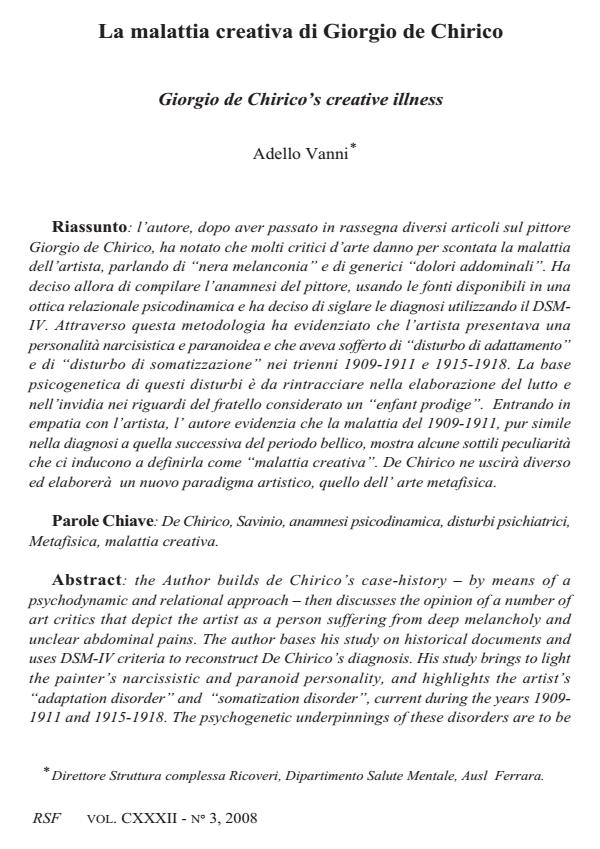La malattia creativa di Giorgio de Chirico
Journal title RIVISTA SPERIMENTALE DI FRENIATRIA
Author/s Adello Vanni
Publishing Year 2008 Issue 2008/3
Language Italian Pages 20 P. 115-134 File size 496 KB
DOI
DOI is like a bar code for intellectual property: to have more infomation
click here
Below, you can see the article first page
If you want to buy this article in PDF format, you can do it, following the instructions to buy download credits

FrancoAngeli is member of Publishers International Linking Association, Inc (PILA), a not-for-profit association which run the CrossRef service enabling links to and from online scholarly content.
La malattia creativa di Giorgio de Chirico - the Author builds de Chirico’s case-history by means of a psychodynamic and relational approach then discusses the opinion of a number of art critics that depict the artist as a person suffering from deep melancholy and unclear abdominal pains. The author bases his study on historical documents and uses DSM-IV criteria to reconstruct De Chirico’s diagnosis. His study brings to light the painter’s narcissistic and paranoid personality, and highlights the artist’s adaptation disorder and somatization disorder, current during the years 1909- 1911 and 1915-1918. The psychogenetic underpinnings of these disorders are to be found, either in his working through process of mourning, or in his envy of his brother, considered enfant prodige. Moreover, the author, while using an empathic approach, reveals that de Chirico’s illness, during the period 1909-1911, was similar to that described later in the post-war period. However, the first comprised subtle characteristics that led the author to label it creative illness. In fact, De Chirico progressed during this phase of ailment, and as a result, developed a new theory on metaphysical art. Keywords: De Chirico, Savinio, psychodynamic case-history, mental disorder, Metaphysics, creative illness.
Adello Vanni, La malattia creativa di Giorgio de Chirico in "RIVISTA SPERIMENTALE DI FRENIATRIA" 3/2008, pp 115-134, DOI: